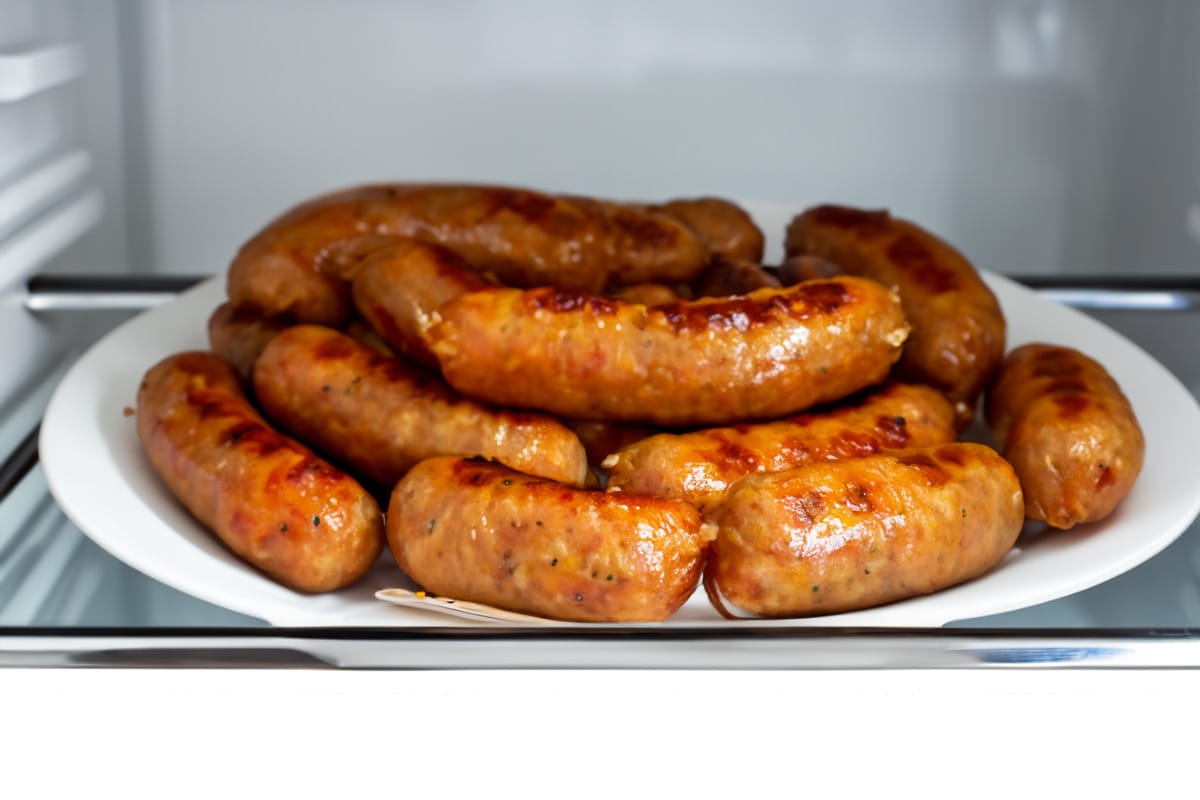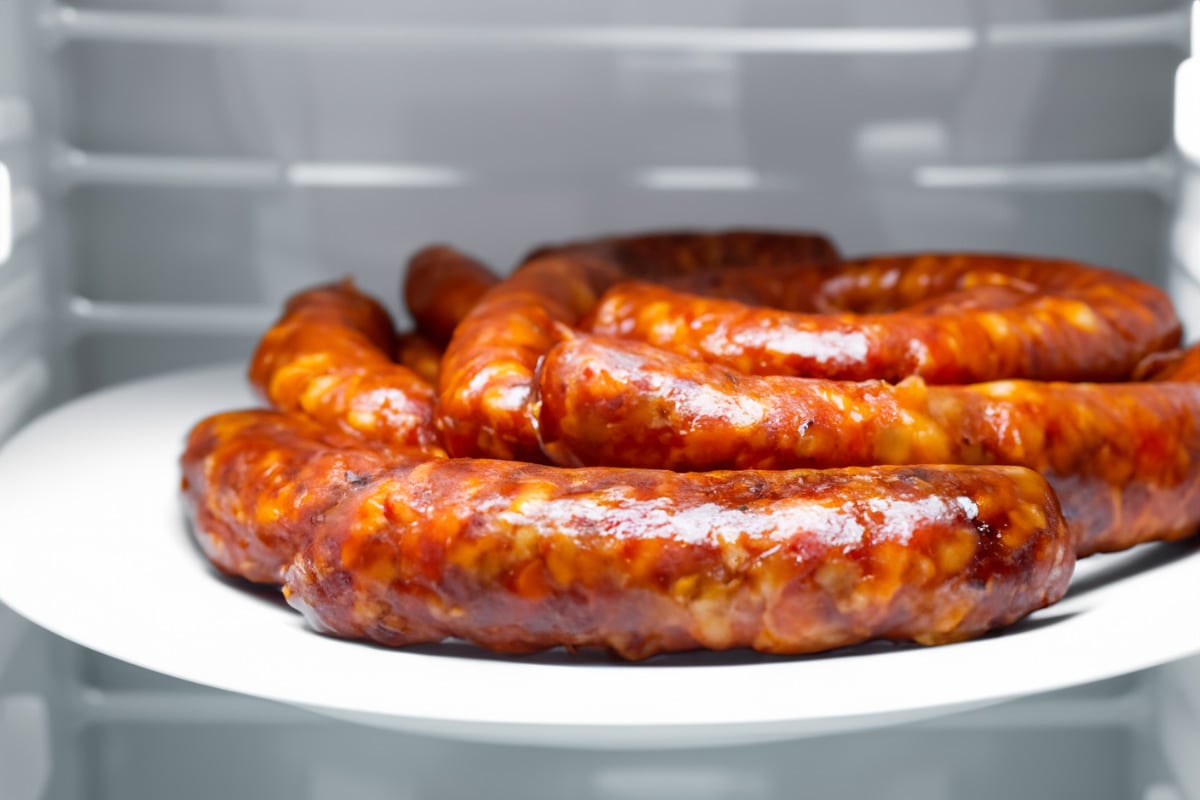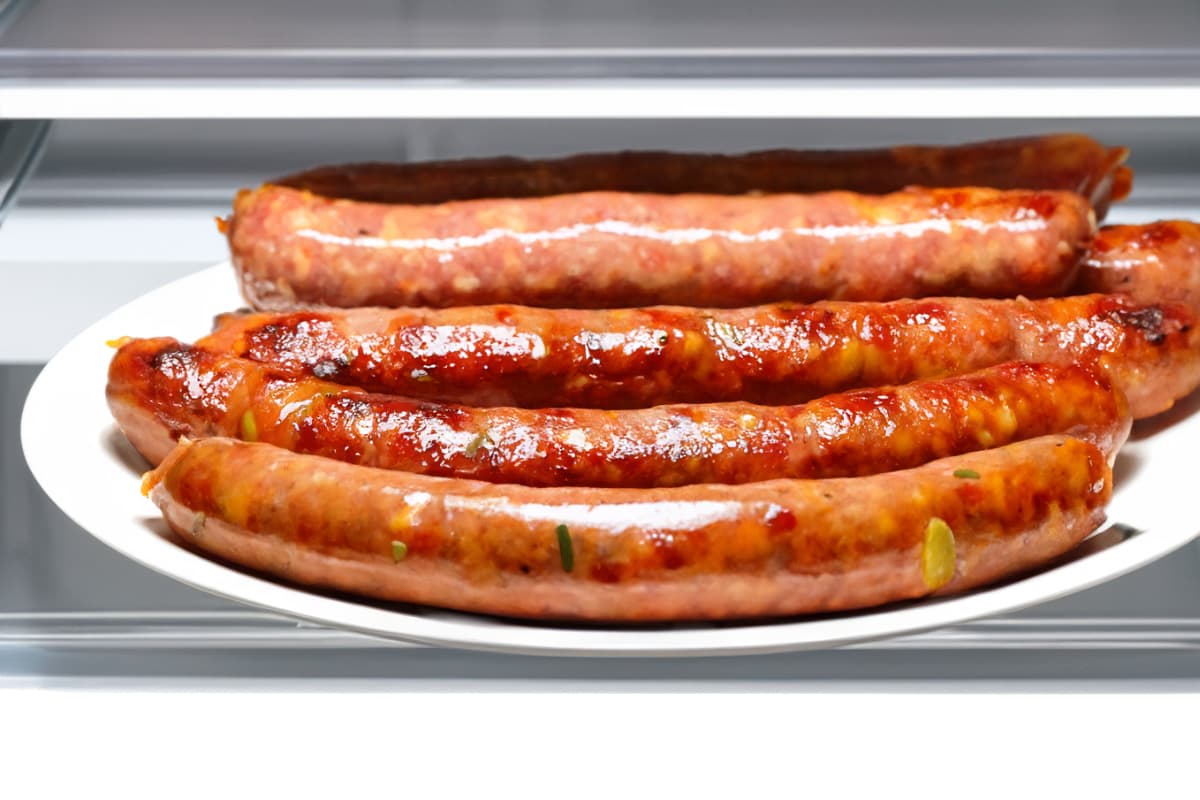Are you wondering how long you can keep cooked sausages in the fridge? It’s a common question, and the answer isn’t always straightforward. While cooked sausages can last for a few days in the fridge, the exact duration depends on several factors, including the type of sausage and how it was cooked.

Sausages, like many food products, have specific storage requirements to ensure they remain fresh and safe to eat. According to the U.S. Department of Agriculture (USDA), these storage times vary depending on whether the sausages are raw or cooked, and what type of meat they are made from. Some sausages are fully cooked and just need to be reheated, while others need to be cooked thoroughly before consumption.
For sausages made from beef, pork, turkey, or chicken, raw sausages can typically be stored in the refrigerator for 1-2 days and in the freezer for 1-2 months. Cooked sausages, on the other hand, can be stored in the refrigerator for 3-4 days and in the freezer for 2-3 months. As highlighted by Foodsafety.gov, storage recommendations are crucial as consuming spoiled sausages can lead to foodborne illnesses.
Additionally, some sausages are cured and can be stored for longer periods than fresh sausages. In this article, we’ll explore the different types of cooked sausages and how to store them properly.
Key Takeaways
- The duration of cooked sausages in the fridge varies depending on the type of sausage and how it was cooked.
- Proper storage is key to ensuring cooked sausages remain safe to eat.
- By understanding the different types of cooked sausages and how to store them, you can enjoy them safely and deliciously.
Understanding Cooked Sausages
What are Cooked Sausages?
Cooked sausages are a popular food item that has been enjoyed by people for centuries. They are made by grinding meat, adding spices, and stuffing the mixture into casings.
The sausages are then cooked, either by boiling, grilling, or frying. Cooked sausages are a convenient and tasty way to enjoy meat, and they can be eaten on their own or used as an ingredient in other dishes.
Different Types of Cooked Sausages
There are many different types of cooked sausages, each with its own unique flavor and texture. Here are some of the most common types:
- Bratwurst: A type of German sausage made from pork and sometimes beef. Bratwurst is usually grilled or fried and is often served with sauerkraut and mustard.
- Hot Dogs: A type of sausage made from beef, pork, or a combination of the two. Hot dogs are usually boiled or grilled and are often served in a bun with ketchup, mustard, and other toppings.
- Italian Sausage: A type of sausage made from pork and flavored with fennel and other spices. Italian sausage is often grilled or used as an ingredient in pasta dishes.
- Kielbasa: A type of Polish sausage made from pork and beef. Kielbasa is usually smoked and can be eaten on its own or used as an ingredient in soups and stews.
- Andouille: A type of sausage that originated in France but is now popular in Louisiana Creole cuisine. Andouille is made from pork and flavored with spices like paprika, cayenne pepper, and garlic. It is often used in dishes like gumbo and jambalaya.
No matter what type of cooked sausage you prefer, it’s important to know how long you can keep it in the fridge to ensure it stays fresh and safe to eat.
Storing Cooked Sausages

If you’re anything like me, you love to cook up a big batch of sausages on the grill or stovetop. But what do you do with the leftovers? Can you store them in the fridge for later? The answer is yes, but there are a few things you should keep in mind to ensure they stay fresh and safe to eat.
Proper Storage Methods
The first thing to consider when storing cooked sausages is the container you use. Be sure to use an airtight container or wrap them tightly in plastic wrap or aluminum foil.
This will help prevent any bacteria or odors from getting in and keep them fresh for longer.
Another important factor is the timing. Cooked sausages should be stored in the fridge within two hours of cooking.
If they’ve been sitting out for longer than that, it’s best to toss them out to avoid any foodborne illness.
Ideal Temperature
When it comes to storing cooked sausages, temperature is key. They should be stored at a temperature of 40°F or below to prevent any bacterial growth.
This means storing them in the coldest part of your fridge, such as the back or bottom shelf.
If you’re unsure of the temperature of your fridge, invest in a refrigerator thermometer to ensure it’s staying at the ideal temperature.
And remember, never store cooked sausages in the fridge for more than four days. If you don’t plan on eating them within that time frame, it’s best to freeze them instead.
Factors Influencing Storage

If you’re like most people, you probably have some leftover sausages in your fridge that you’re wondering if it’s still safe to eat. The good news is that cooked sausages can last for several days in the fridge, but there are some factors that can influence how long they will stay fresh.
The duration that cooked sausages can last in the fridge depends on several factors:
- Type of Sausage: The shelf life of cooked sausages varies depending on the type of sausage. Different sausages, such as pork, beef, chicken, or turkey sausages, have different characteristics and moisture content. For instance:
- Cooked pork sausages can typically last for up to four days when properly stored in the fridge.
- Cooked chicken sausages may have a shorter shelf life, usually lasting around two days when refrigerated.
- Storage Temperature: The temperature at which you store your cooked sausages plays a crucial role in their longevity. To keep sausages fresh, they should be stored at or below 40°F (4°C). This temperature range inhibits the growth of harmful bacteria and helps maintain the quality of the sausages. Ensure that your refrigerator is set to this ideal temperature and use a thermometer if necessary to monitor it.
- Storage Container: The container you use for storing cooked sausages is equally important. Always opt for an airtight container or wrap them tightly in plastic wrap or aluminum foil. This airtight seal prevents air and odors from entering, helping to keep the sausages fresh for a longer time. Additionally, ensure that the container is clean and dry before placing the sausages inside to prevent any potential contamination.
By considering these factors, you can effectively determine the shelf life of your cooked sausages and take the necessary steps to ensure they remain safe and enjoyable to eat while reducing food waste.
Signs of Spoilage
Even if you follow all the right storage guidelines, there’s still a chance that your cooked sausages may spoil before you have a chance to eat them. Here are some signs to look out for:
- Smell: One of the most noticeable indicators of spoiled cooked sausages is a foul or sour odor. If you detect an unpleasant or off-putting smell when you open the container or unwrap the sausages, it’s a strong sign that they have gone bad. Trust your sense of smell; if it doesn’t smell right, it’s best to discard the sausages.
- Texture: Spoiled sausages can undergo changes in texture. When you touch them, they may feel slimy or sticky rather than the typical firm and slightly moist texture of fresh cooked sausages. If the sausages feel unpleasantly slippery or have an unusual consistency, it’s a clear indication that they are no longer safe to eat.
- Appearance: Visual cues can also help you determine whether cooked sausages have spoiled. Check for any visible signs of mold growth on the sausages. Mold can appear as fuzzy spots or patches of different colors on the surface. If you notice mold on the sausages, it’s a sign that they have deteriorated, and they should be discarded.
Additionally, pay attention to any significant changes in the color of the sausages. While some color changes can occur naturally as sausages age, dramatic alterations in color, such as a shift to green or an unnatural grayish hue, are warning signs that the sausages may have spoiled.
Safety Measures
When it comes to storing and reheating cooked sausages, there are a few safety measures you should keep in mind to ensure that you and your loved ones stay healthy and safe.
Avoiding Cross Contamination
One of the most important things to keep in mind when storing cooked sausages is to avoid cross-contamination. This means that you should always store your sausages in a separate container from other foods, especially raw meats.
You should also use separate utensils and cutting boards when handling cooked sausages, and always wash your hands thoroughly before and after handling them.
Reheating Cooked Sausages
If you’re planning on reheating cooked sausages, it’s important to do so safely to avoid the risk of foodborne illness. The best way to reheat sausages is to use a microwave or oven, and to make sure that the sausages reach an internal temperature of at least 165°F (74°C) before eating.
When reheating sausages in the microwave, make sure to cover them with a microwave-safe lid or wrap to prevent them from drying out. If you’re using an oven, preheat it to 350°F (175°C) and place the sausages in a baking dish.
Cover the dish with foil and bake for 10-15 minutes, or until the sausages are heated through.
Remember, it’s always better to be safe than sorry when it comes to storing and reheating cooked sausages. By following these simple safety measures, you can enjoy your sausages without worrying about getting sick.
Bottom Line
Do you have your own sausage storage secrets? We’d love to hear from you. Share your tips in the comments below, or if you’ve found this guide helpful, please pass it on to your friends and family. The more we know, the better we can keep our food fresh and safe.

Leave a Reply